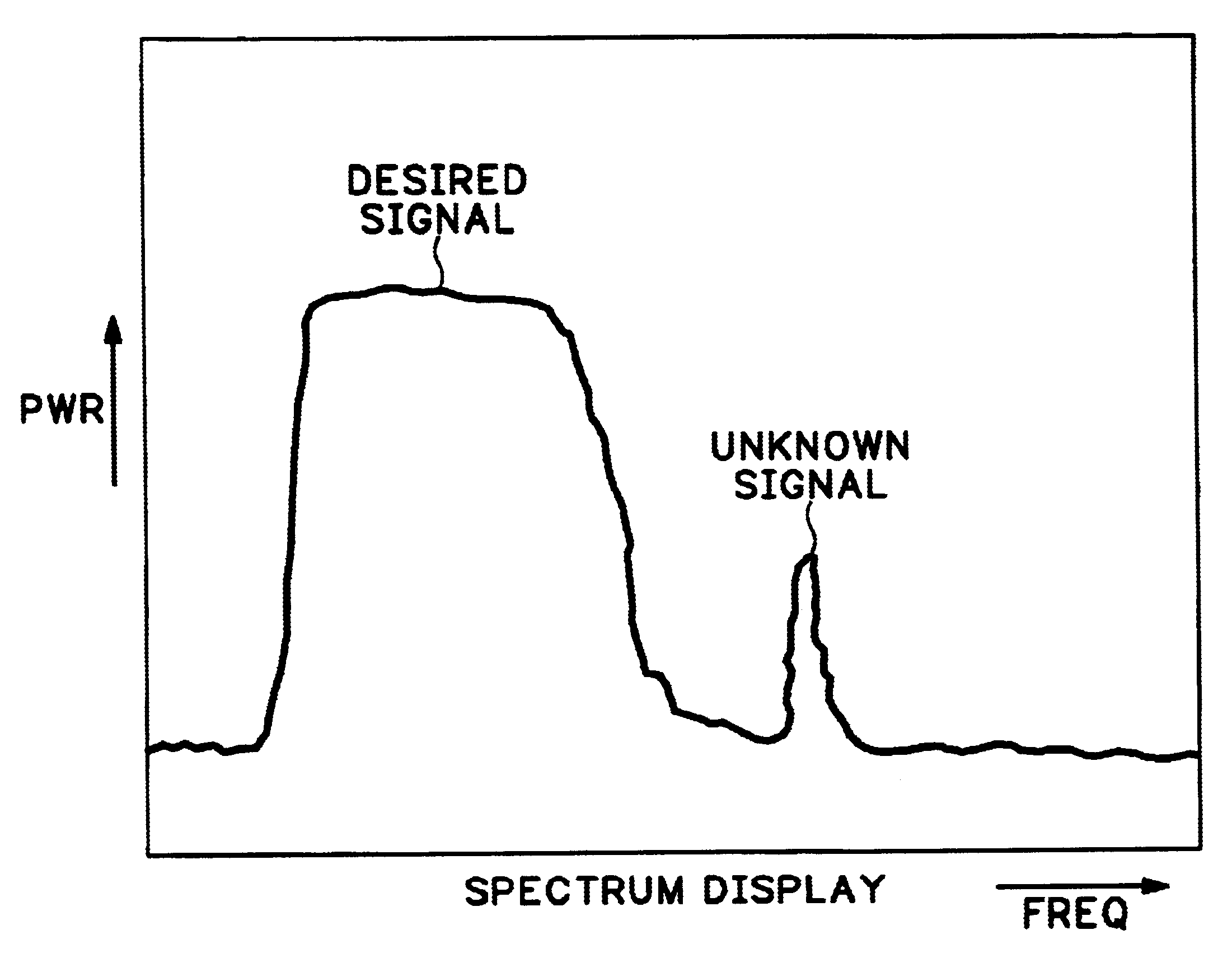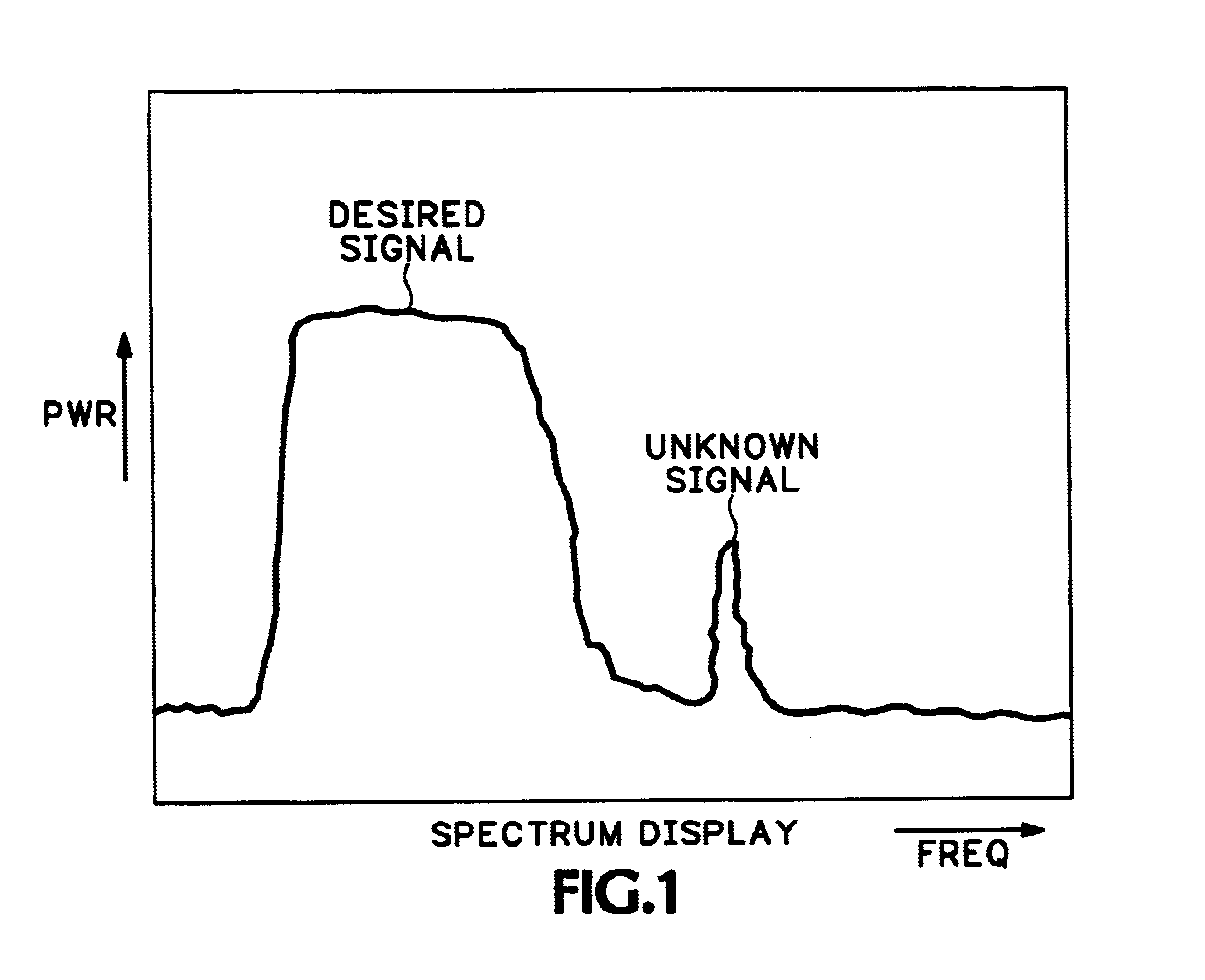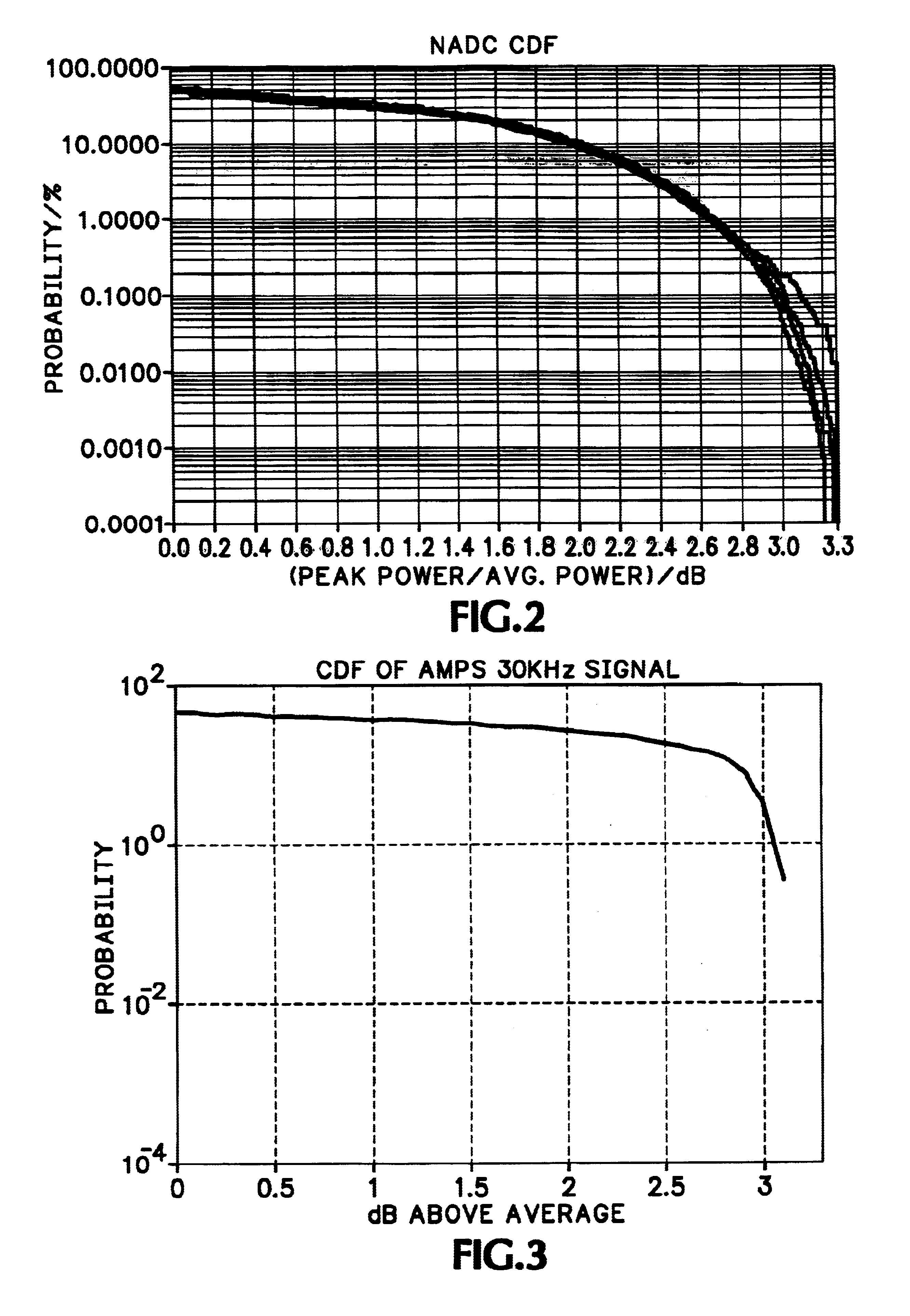Signal type identification
a technology of type identification and signal, applied in the field of radio frequency signal measurement, can solve problems such as interference signals and lack of skill and experience necessary to discrimina
- Summary
- Abstract
- Description
- Claims
- Application Information
AI Technical Summary
Benefits of technology
Problems solved by technology
Method used
Image
Examples
Embodiment Construction
[0011]From the list of signals that need to be identified, it is seen that almost every signal type has some specific “signature” parameter. One such parameter may be the frequency. A database or table of stored information containing spectral band assignments for various types of modulated signals may be used. When a signal is selected by suitable means, such as cursor positioning via mouse or dial, touching or the like, the database may be consulted to see what signal or signals may be expected to exist at the selected frequency of the selected signal.
[0012]Another parameter is the “Occupied BandWidth of the signal” (OBW). Since the OBW measurement may be done directly on an intermediate frequency (IF) signal without demodulating the signal, it is fairly straight forward using existing algorithms, such as using fast Fourier transform (FFT) and estimating the number of bins for 95% of total power. Table 1 below shows signals that may be measured, the signals that have high correlat...
PUM
 Login to View More
Login to View More Abstract
Description
Claims
Application Information
 Login to View More
Login to View More - R&D
- Intellectual Property
- Life Sciences
- Materials
- Tech Scout
- Unparalleled Data Quality
- Higher Quality Content
- 60% Fewer Hallucinations
Browse by: Latest US Patents, China's latest patents, Technical Efficacy Thesaurus, Application Domain, Technology Topic, Popular Technical Reports.
© 2025 PatSnap. All rights reserved.Legal|Privacy policy|Modern Slavery Act Transparency Statement|Sitemap|About US| Contact US: help@patsnap.com



